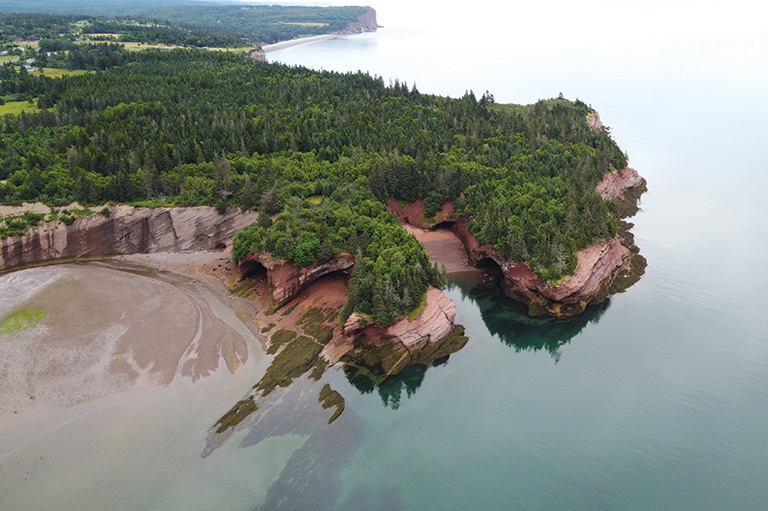Ukrainian Odyssey

The perfect afternoon road trip begins in Dauphin, Manitoba, located at the foot of Riding Mountain National Park, roughly four hours northwest of Winnipeg.
After the railway was built in the late 1890s, the region was one of the hot spots for Ukrainian immigrants seeking to settle on the Prairies. With breathtakingly beautiful blue skies and open fields, the scenery evokes feelings of endless possibility.
The oldest Ukrainian community was founded under the leadership of Wasyl Ksionzyk. In 1896, he brought a group of fifteen families — mainly from the villages of Zavalia and Berezova in the Terebovlia county of Ukraine — to settle Trembowla (Terebovlia) colony near the Drifting River.
Within a year, more than two thousand settlers would come to live there or to establish additional settlements nearby. It was a hard life, but nothing compared to the travails many were escaping in their home country. The church played an important role in fuelling the faith and perseverance of these early settlers.
Our first stop was the Cross of Freedom Historic Site where the first Ukrainian Catholic mass in North America was held on April 27, 1897.
Located near a bend of the Drifting River, Cross of Freedom is a living heritage site where you can walk around and look inside a cluster of relocated heritage buildings, including a thatched-roof cottage, a school, and St. Michael’s, the oldest Ukrainian Catholic church in Canada.
We were greeted by some locals who were busy preparing for their annual civic holiday liturgy and pioneer celebration dinner, part of Canada’s National Ukrainian Festival. The ladies had just made 103 dozen perogies (potato dumplings) and roughly fifty dozen holubtsi (cabbage rolls) for just under a thousand guests.
From there we headed northeast to the community of Sifton, aptly named after Minister of the Interior Clifford Sifton, who was one of the strongest proponents of settling the West with Eastern European immigrants.
Our destination was easy to identify by its beckoning silver domes. The Holy Resurrection Russian Orthodox Church of North America was built in 1926. Sadly, a few months after our visit, the church was destroyed in a fire — a loss for both the community and those who care about Canada’s built heritage.
Proud and dedicated volunteers greeted us at every venue, making these visits inviting and personal. Due south from Dauphin, Selo Ukraina is perhaps the grandest testament to the early settlers’ vision and commitment to their heritage.

There, an outdoor ten-thousand-seat amphitheatre, auditorium, and multi-purpose facility provide a unique venue for key Manitoba festivals and for entertainment such as Dauphin’s Countryfest (July 1 weekend). But it is first and foremost the home of Canada’s National Ukrainian Festival (August long weekend), which attracts world-class performers and more than five thousand visitors each year.
We arrived two weeks earlier, so our tour of the heritage site was much quieter than it would be during the festival. Established in 1985, Selo Ukrainia has invested revenues from fundraising and from festival activities into relocated heritage buildings that include a church, a 1920s schoolhouse, a shoemaking shop, two homesteads, and a music hall.
The buildings are active throughout the festival, offering interpretive events and workshops on bread-making and egg-decorating, as well as a contemporary Ukrainian marketplace. The site also includes a memorial park and the Filip Konowal Victoria Cross monument, which honours a Ukrainian Canadian who received Canada’s highest honour for valour in combat.
After our many travels, we were more than ready to sample Ukrainian cuisine first-hand, so we returned to Dauphin for a traditional Ukrainian supper in the basement of the recently constructed Ukrainian Catholic church.
Volunteers from the church, dressed in authentic Ukrainian attire, welcomed us. One of them explained that many women still embroider their own blouses, which is why no two shirts are exactly the same.
Two volunteers serenaded us with traditional Ukrainian music, while we feasted on borscht, perogies, holubtsi, kasha (buckwheat salad), and kolbasa (garlic sausage).
The meal was fantastic, but the real dessert for us was a walk across to the Historic Ukrainian Catholic Church of the Resurrection, which until 1990 had been the primary church for the local Ukrainian Catholic community.
Built at the height of the Depression, the church is typical of the prairie cathedral design attributed to Philip Ruh, a priest and church architect known for the size and decorative appeal of his churches.
But it’s the inside of the church that takes one’s breath away. It took artist Theodore Baran two and a half years to complete the religious painting of the church interior in 1957.
Baran did the work as a volunteer because he believed a church of this stature should not have any spaces unadorned. He was given full reign in the designs and subject matter of his paintings, which reflect Ukrainian religious iconography and pay homage to northern and Aboriginal influences.
The region contains many other interesting side roads as well as unique points of interest in communities such as Rossburn and Sandy Lake.
Parkland Tourism produces guides that describe self-directed tours of the Ukrainian heritage of the region. It also provides suggestions for tour packages for visitors who prefer to leave the driving to someone else.
Themes associated with this article
Advertisement




